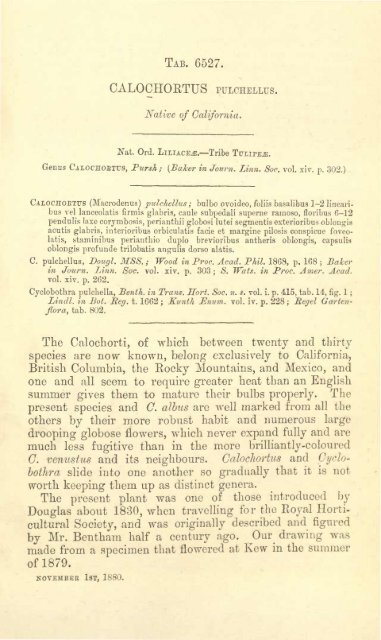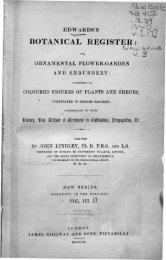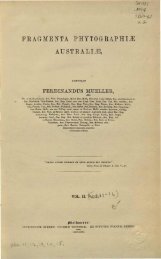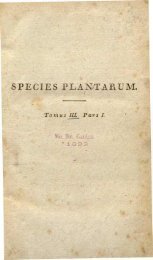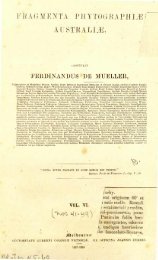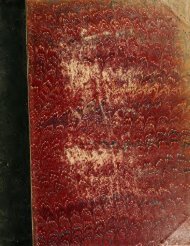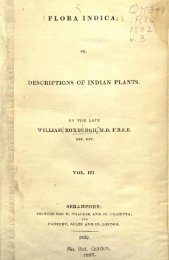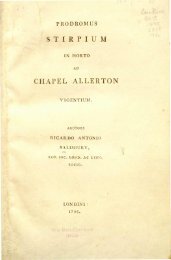Botanical Magazine 106 - 1880.pdf - hibiscus.org
Botanical Magazine 106 - 1880.pdf - hibiscus.org
Botanical Magazine 106 - 1880.pdf - hibiscus.org
You also want an ePaper? Increase the reach of your titles
YUMPU automatically turns print PDFs into web optimized ePapers that Google loves.
TAB. 6527.<br />
CALOCHORTUS PULCHELLUS.<br />
Native of California.<br />
Nat. Ord. LILIáCEA.•Tribe TULIPES.<br />
Genus CALOCHOBTTJS, Pursh ; {Baker in Journ. Linn. Soc. vol. x'iv. p. 302.)<br />
CALOCHOETUS (Macrodenus) •pulchellus ; bulbo ovoideo, foliis basalibus 1-2 lineari-<br />
bus vel lanceolatis firmis glabris, caule subpedali superne ramoso, floribus 6-12<br />
pendulis laxe corymbosis, perianthii globosi lutei segmentis exterioribus oblongis<br />
acutis glabris, interioribus orbiculatis facie et margine pilosis conspicue íbveo-<br />
latis, staminibus periantbio duplo brevioribus antheris oblongis, capsulis<br />
oblongis profunde trilobatis angulis dorso alâtis.<br />
C. pulcbellus, Dougl. MSS. ; Wood in Proc. Acad. Phil. 1868, p. 168 ; Baker<br />
in Journ. Linn. Soc. vol. xiv. p. 303 ; S. Wats, in Proc. Amer. Acad.<br />
vol. xiv. p. 262.<br />
Cyclobothra pulcbella, Benth. in Trans. Hort. Soc. n. s. vol. i. p. 415, tab. 14, fig. 1 ;<br />
Lindl. in Bot. Reg. t. 1662 ; Kunth Enum. vol. iv. p. 228 ; Regel Garten-<br />
flora, tab. 802.<br />
The Calochorti, of which between twenty and thirty<br />
species are now known, belong exclusively to California,<br />
British Columbia, the Rocky Mountains, and Mexico, and<br />
one and all seem to require greater heat than an English<br />
summer gives tliem to mature their bulbs properly. The<br />
present species and C. albus are well marked from all the<br />
others by their more robust habit and numerous large<br />
drooping globose flowers, which never expand fully and are<br />
much less fugitive than in the more brilliantly-coloured<br />
C. venustiis and its neighbours. Calochortus and Cyclo-<br />
bothra slide into one another so gradually that it is not<br />
worth keeping them up as distinct genera.<br />
The present plant was one of those introduced by<br />
Douglas about 1830, when travelling for the Royal Horti-<br />
cultural Society, and was originally described and figured<br />
by Mr. Bentham half a century ago. Our drawing was<br />
made from a specimen that flowered at Kew in the summer<br />
of 1879.<br />
KOVEMBEE 1ST, 1880.


